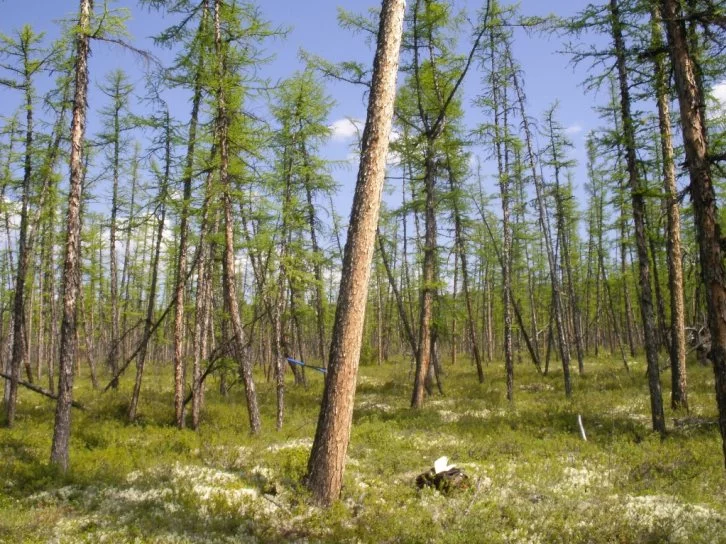Duration: 2011-2013
Contact: Matthias Saurer,
Contact: Matthias Saurer,
Background
Siberian larch (Larix) forests in the continuous permafrost region are sensitive ecosystems and have been especially exposed to the global warming of the recent decades. These forests are vulnerable, as the vegetation period is short, and water and nutrient availabilities are low. The permafrost in this region has an important role as a direct water source during summer drought due to extremely low precipitation. Increasing temperatures in the future will enhance the leaf-to-air vapour pressure difference, thus the evaporative demand and water loss of the plants, which may reduce productivity and carbon sequestration of these forests. Furthermore, higher decomposition rates in the uppermost part of soils and accessibility of carbon currently stored in permafrost to microbial degradation could release CO2 and provoke a risk of an additional radiative forcing of the climate system.
Main goals
The main goal of this project is to improve the use of carbon and oxygen isotope ratios in tree-rings as a tool to detect the response of Siberian larch forests on permafrost to the recent climate change. The goal will be achieved by a detailed analysis of the incorporation and fractionation of isotopes in a Siberian forest ecosystem (64°N, 100°E) on a seasonal scale, at an approximately weekly time resolution during the vegetation period. A new approach involving compound-specific isotope analysis of different plant components will be applied to enhance the understanding of post-photosynthetic fractionation and carbon allocation processes. These results will be used to calibrate isotope fractionation transfer models along the leaf and stem. Oxygen isotope values of water samples extracted from soil, leaves and branches will be the basis for a better understanding of the water-use of trees, with a focus on time-lags caused by storage and release of permafrost water. Earlywood and latewood isotope chronologies covering the last 100 years on sites contrasting in permafrost depth will enable the application of the results on longer timescales. This will reveal if the thawing of permafrost and the deteriorating summer drought conditions are the key factors influencing forest growth.
The project will be carried out in close cooperation with the V.N.Sukachev Institute of Forest, Krasnoyarsk (Russia), which provides a unique opportunity to access valuable samples from an area difficult to reach. With the new methodology we will retrieve the full information contained in these samples. The results will be compared to studies conducted in the Alpine region in the Lötschental, where tree growth is also temperature-limited, but where the soil conditions (without permafrost) are very different.
The project will be carried out in close cooperation with the V.N.Sukachev Institute of Forest, Krasnoyarsk (Russia), which provides a unique opportunity to access valuable samples from an area difficult to reach. With the new methodology we will retrieve the full information contained in these samples. The results will be compared to studies conducted in the Alpine region in the Lötschental, where tree growth is also temperature-limited, but where the soil conditions (without permafrost) are very different.


